Rabies is a deadly viral infection that can be passed through the bite of an infected animal (saliva to blood or mucous membrane contact). In India, the most common cause of rabies is bites from unvaccinated stray dogs. 96% of the rabies cases among humans are caused by the bite of unvaccinated and infected dogs.
The rabies virus enters the wounded tissue through the bite along with the saliva of the rabid animal. The virus migrates from the injured tissue to nearby nerves, and through the nerves to the spinal cord to the brain. Once the virus is in the brain, it travels via the nerves to the salivary glands. Hence, an infected animal can secrete the virus with their saliva and cause infection through bites.
Which Animals Commonly Carry Rabies in India?

While bats, skunks and raccoons are the most common sources of rabies in the US, dogs, foxes, jackals, mongooses, monkeys and bats are the most common sources of rabies infection in India.
Why is Rabies such a Serious Issue?
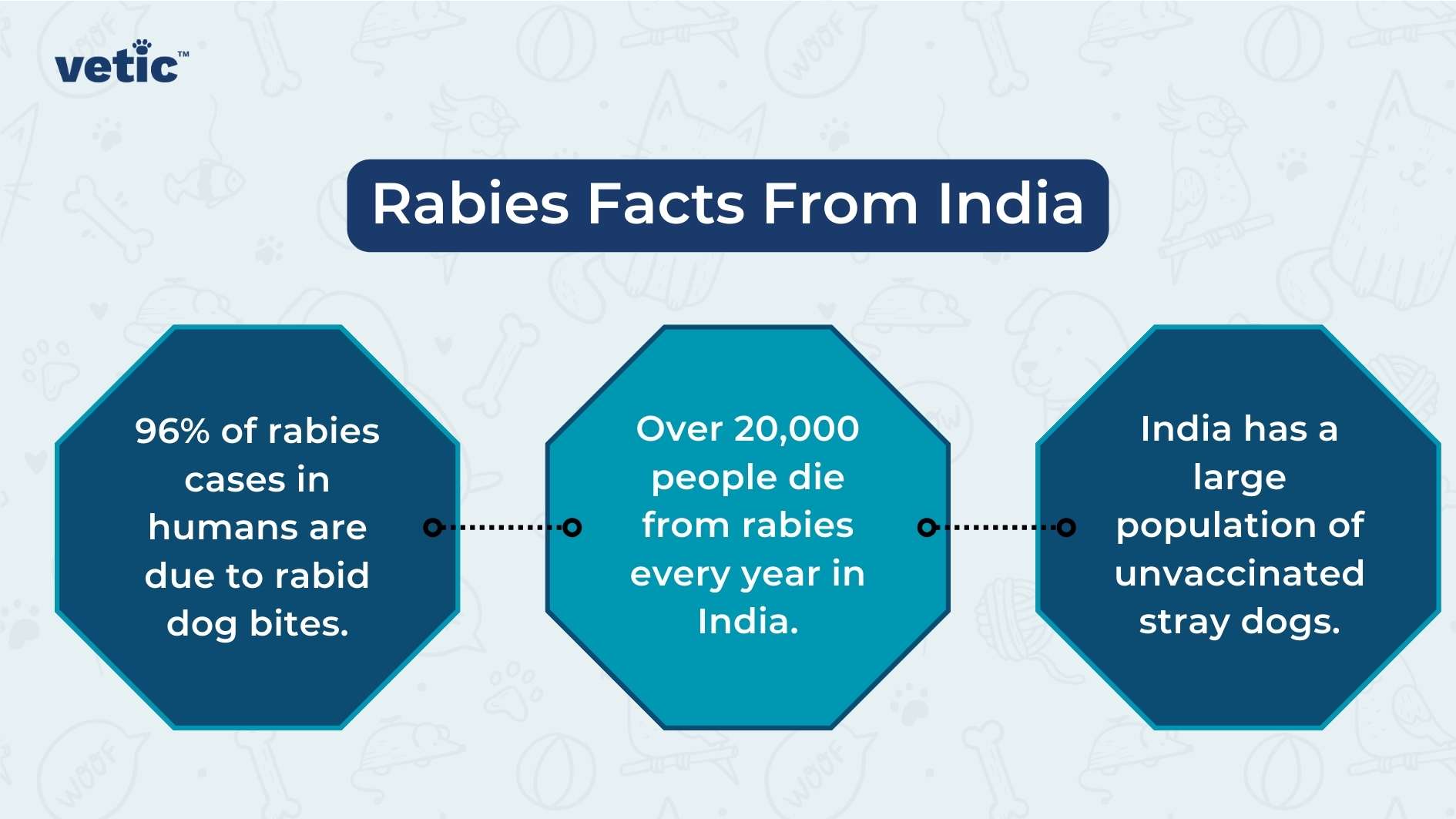
Once the signs and symptoms of rabies begin showing there is no cure. There is no “test” for rabies. The only conclusive test for rabies is a biopsy of the brain tissue that can be done only after the death of the concerned animal.
Hence, we always emphasise on the prevention of rabies which involves a single injection per year for most dogs and cats. Rabies is 100% preventable through timely vaccinations. These pre-exposure antirabies vaccines are available free of cost for all humans at government hospitals and primary health clinics.
Similarly, you should get your dog or cat vaccinated before they are 16 weeks of age or ASAP to prevent any risk of rabies.
Signs of Rabies in Dogs
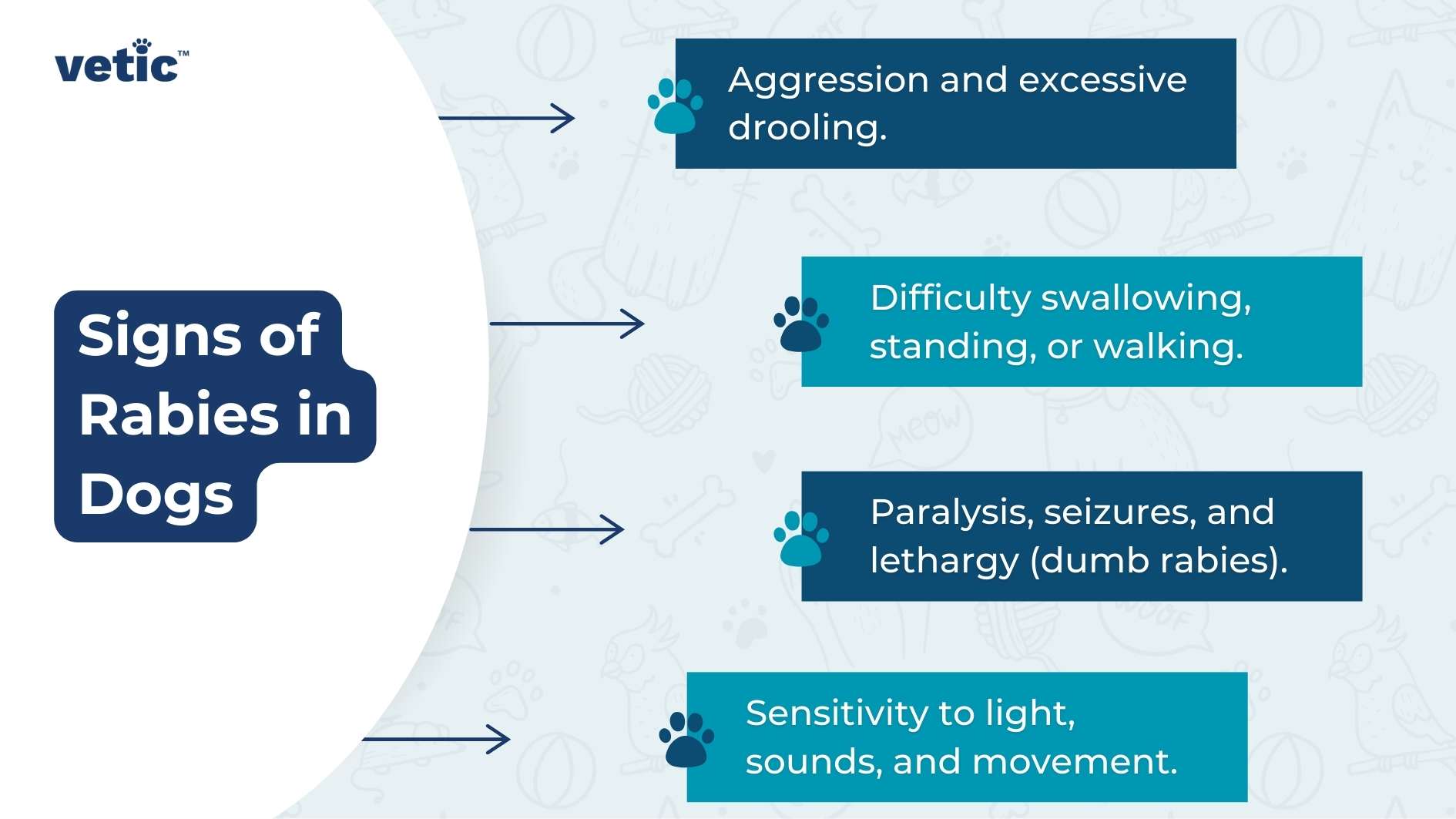
It is important to remember that once the signs of rabies in dogs begins it is impossible to save them or find a cure.
Nonetheless, you should learn the signs and symptoms of rabies so you can safeguard yourself and your pet from a suspected rabid animal.
Rabies can be difficult to diagnose or detect just from the signs and symptoms, since not all dogs or wildlife show the furious form of the disease. Some animals can show signs of dumb or the paralytic form of rabies.
More common signs of rabies in dogs and other animals –
- Dogs might become fearful and aggressive.
- They might drool excessively. Rarely, they can foam at their mouths.
- Dogs may have difficulty standing straight, walking or even have seizures.
- Most dogs experience difficulty chewing and swallowing.
- They can become overstimulated by light, sudden movement or sounds.
Less common signs of rabies often seen in the cases of “dumb rabies” in dogs include –
- Lethargy and fever
- Loss of balance while walking or complete paralysis
- Excess fear or even overly affectionate behaviour
- Complete inappetence
- Breathing difficulty and hypersalivation
How Do Veterinarians Diagnose Rabies in Dogs and Cats?
There is no conclusive diagnosis for rabies in dogs/cats while they are alive. There are no blood tests that can measure or detect a developing infection.
The only way to diagnose rabies in any animal is post-mortem. The veterinary pathologist can retrieve a part of the brain tissue and examine it using antibody testing.
What is The Treatment of Rabies in Dogs and Cats?
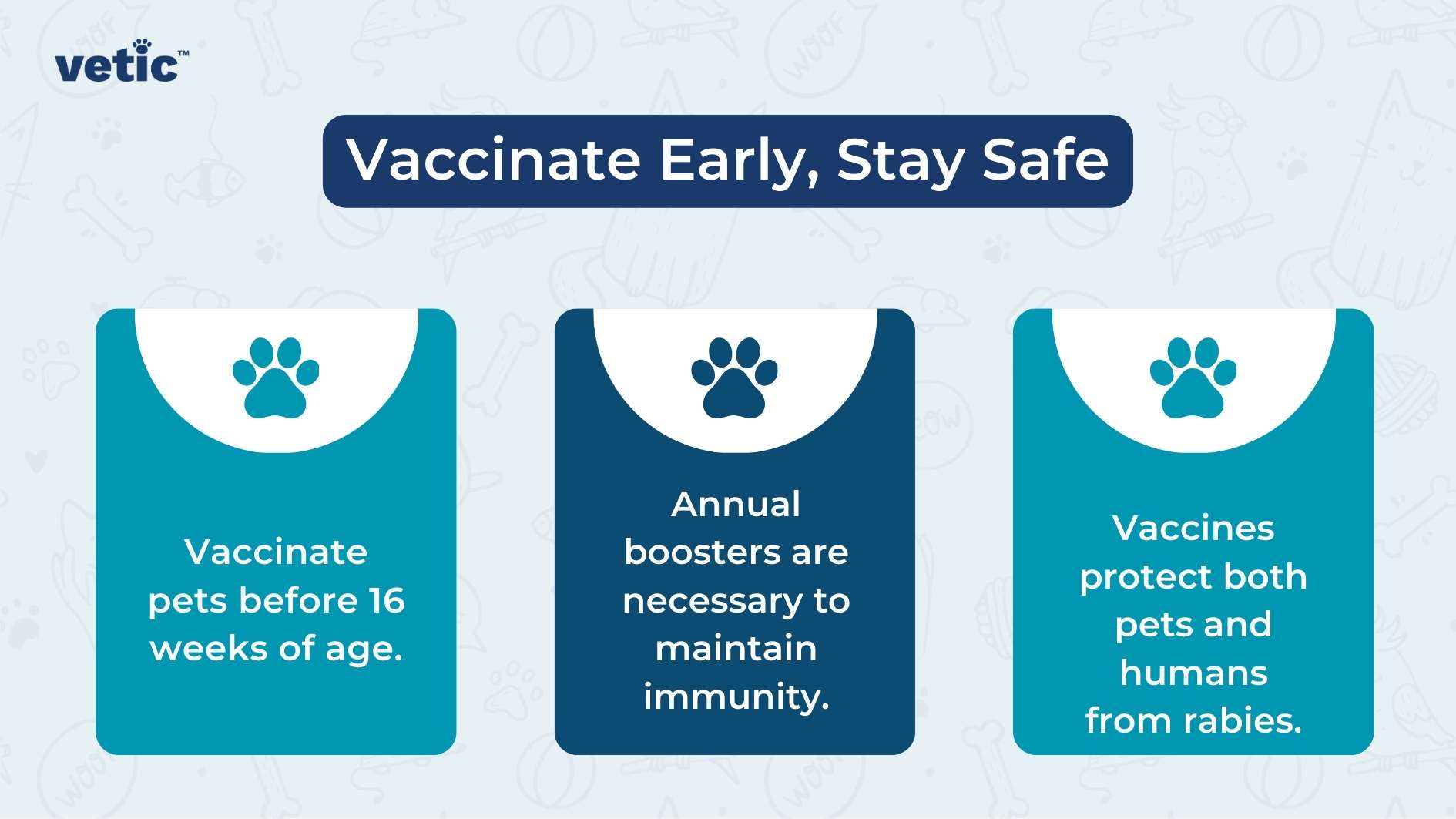
There is NO treatment of rabies in dogs, cats or humans.
Prevention of Rabies in Dogs and Cats
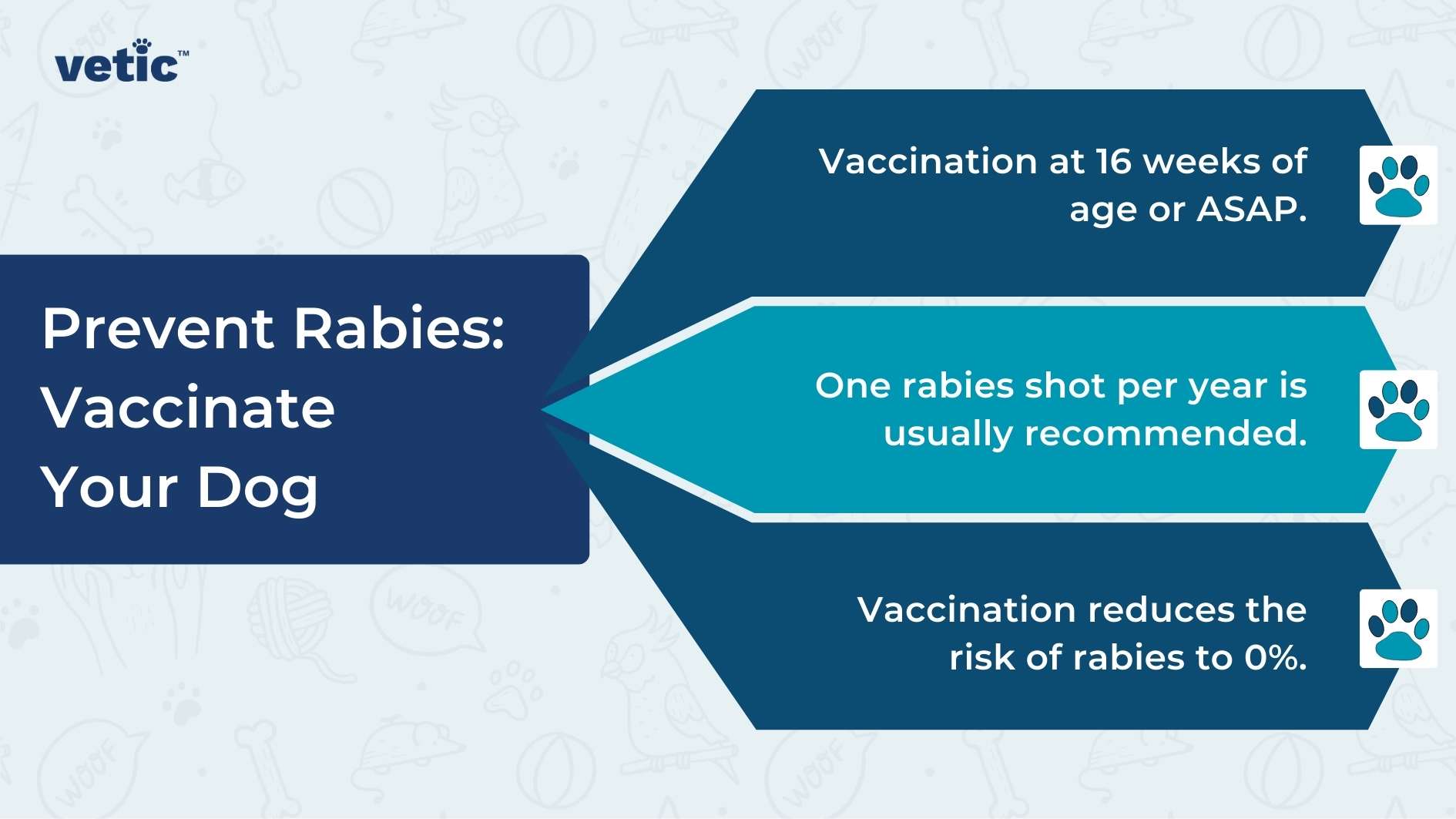
You can certainly prevent rabies in pets by getting them their prophylactic (pre-exposure) vaccine before they are even bitten by any other dog, cat or another animal.
The rabies vaccine is a must for eliminating the risk of rabies in all pets as well as human beings. Preventing rabies involves at least one dose of the anti-rabies vaccine per year so the dog or cat has enough immunity (antibodies) to fight the virus if and when exposed.
Vaccinating a dog or cat after they are bitten usually has no protective effect unless they have received their ARV dose 1 to 3 years before the incident.
For an unvaccinated dog or cat who has been bitten, you may want to consider thorough wound washing/flushing for 15 minutes and a consultation with an expert veterinarian.
For an unvaccinated human being the protocol typically involves washing the wound with soap for 15 mins followed by a shot of tetanus, the correct dose of antirabies serum (immunoglobulin) and vaccination against rabies.
Your Dog Has Been Bitten By Another Dog, What Should You Do?
Wash the wound thoroughly and take them to the veterinarian immediately so they can do a proper wound evaluation, wound flushing and care. If your dog is already vaccinated against rabies, they will receive another dose of the vaccine to boost their immunity against the virus.
FAQs on Rabies
What are the symptoms of rabies in dogs?
Symptoms include behavioural changes such as restlessness, aggression, and irritability, along with difficulty swallowing, excessive drooling, and paralysis as the disease progresses.
Can rabies be transmitted through scratches or contact with saliva?
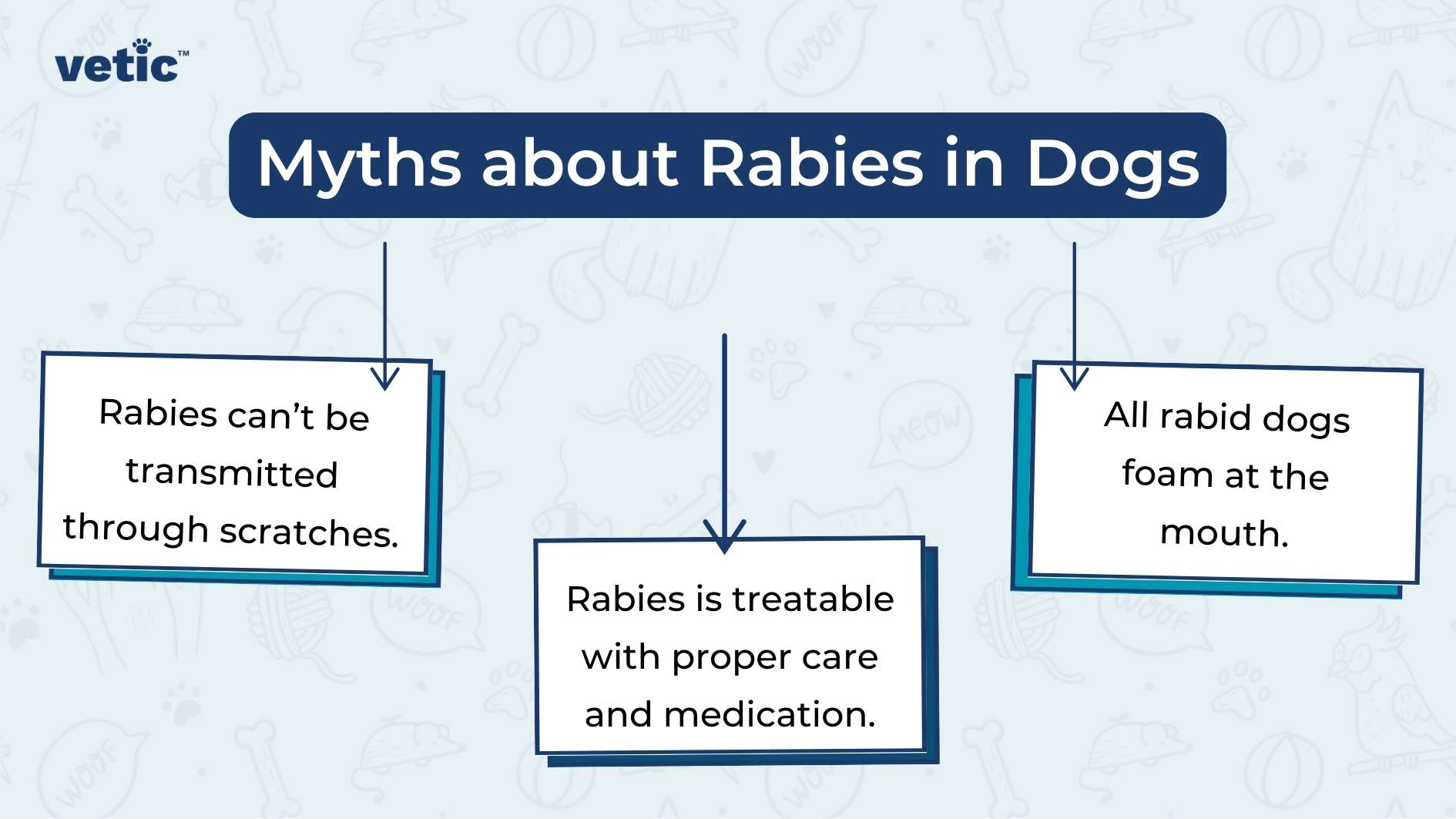
Yes, rabies can be transmitted through scratches, open wounds, or mucous membranes that come into contact with an infected animal’s saliva, not just through bites.
Why is quarantine important after a potential rabies exposure?
Quarantine helps monitor the animal for signs of rabies. If the animal shows symptoms, it confirms the exposure, ensuring timely treatment for humans who came in contact with it.
What should you do immediately after a potential rabies exposure?
Wash the wound thoroughly with soap and water, and seek immediate medical attention for post-exposure prophylaxis (PEP) to prevent the onset of symptoms.
How is rabies transmitted in most cases?

Around 95% of rabies cases in humans are transmitted through dog bites. However, the disease can also spread through scratches or exposure to an infected animal’s saliva.
Is rabies always fatal once symptoms appear?
Yes, rabies is nearly always fatal once symptoms appear. This is why immediate medical intervention with post-exposure prophylaxis (PEP) is crucial after a potential exposure.
Why is rabies still prevalent in India despite being preventable?
Lack of awareness, poor access to medical facilities, and the high population of stray dogs contribute to the prevalence of rabies in India. Furthermore, rabies is not a notifiable disease in the country, leading to underreporting.
What preventive measures are available for rabies?
Vaccinating dogs is the most effective way to prevent rabies in humans. For humans, both pre-exposure and post-exposure vaccinations are available, and wound washing after a bite is an essential preventive step.
